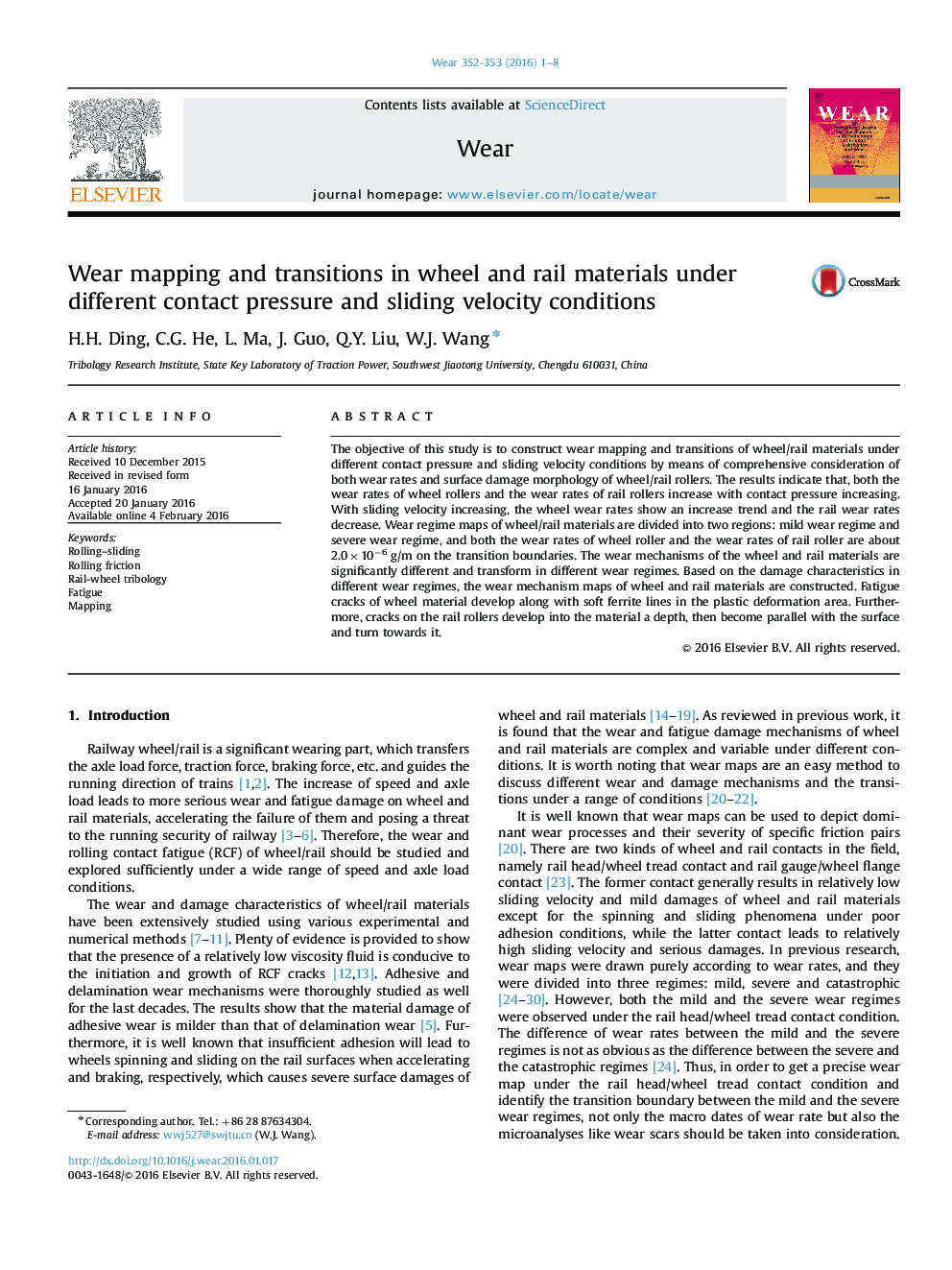| Article ID | Journal | Published Year | Pages | File Type |
|---|---|---|---|---|
| 616903 | Wear | 2016 | 8 Pages |
•Wear mapping and transitions are created by means of wear rate and surface damage.•Wear rates of wheel/rail are about 2.0×10−6 g/m on the transition boundaries.•Wear mechanisms of wheel and rail materials vary in different wear regimes.•The growth mechanism of fatigue cracks of wheel roller differs from those of rail.
The objective of this study is to construct wear mapping and transitions of wheel/rail materials under different contact pressure and sliding velocity conditions by means of comprehensive consideration of both wear rates and surface damage morphology of wheel/rail rollers. The results indicate that, both the wear rates of wheel rollers and the wear rates of rail rollers increase with contact pressure increasing. With sliding velocity increasing, the wheel wear rates show an increase trend and the rail wear rates decrease. Wear regime maps of wheel/rail materials are divided into two regions: mild wear regime and severe wear regime, and both the wear rates of wheel roller and the wear rates of rail roller are about 2.0×10−6 g/m on the transition boundaries. The wear mechanisms of the wheel and rail materials are significantly different and transform in different wear regimes. Based on the damage characteristics in different wear regimes, the wear mechanism maps of wheel and rail materials are constructed. Fatigue cracks of wheel material develop along with soft ferrite lines in the plastic deformation area. Furthermore, cracks on the rail rollers develop into the material a depth, then become parallel with the surface and turn towards it.
